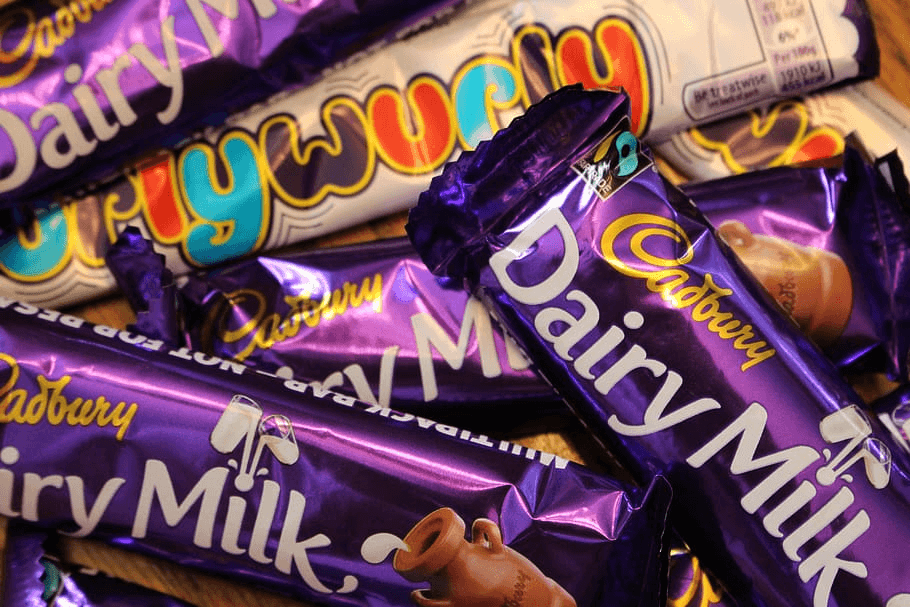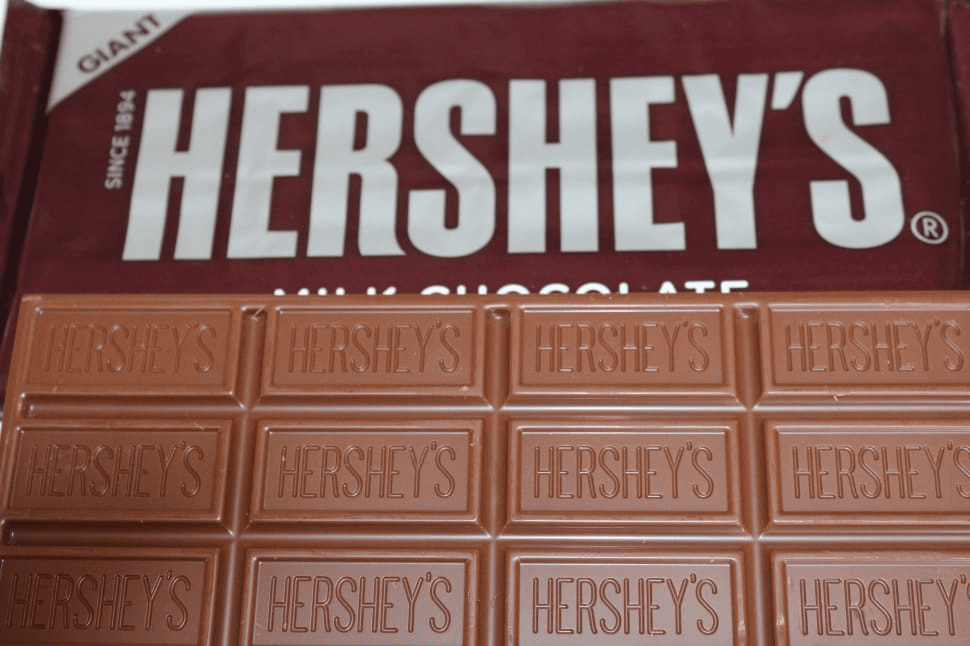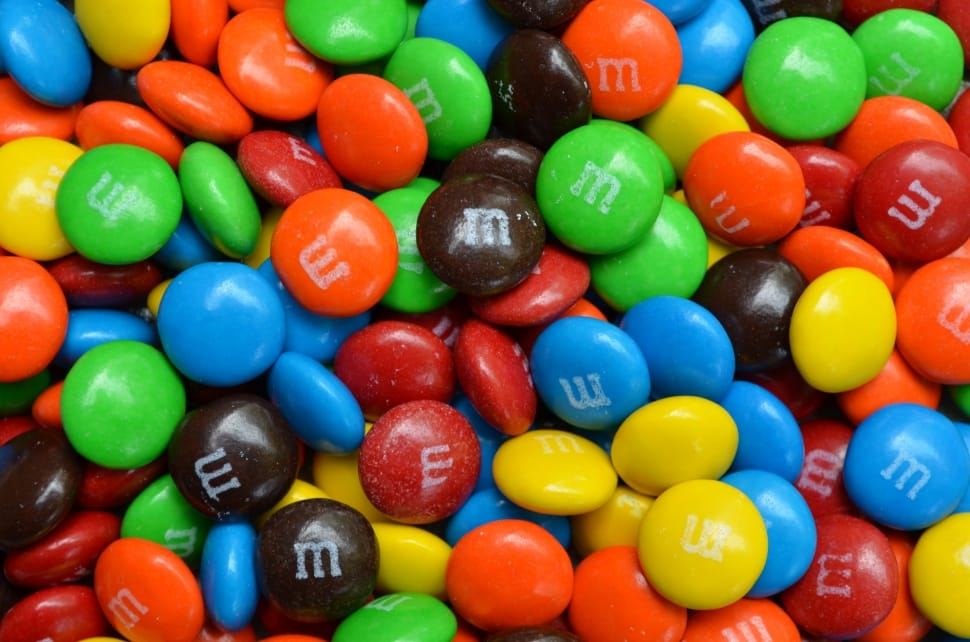Most milk chocolates are considered gluten-free, especially if they’re not made with gluten-containing ingredients. Choose Hershey’s Milk Chocolate, Cadbury, Enjoy Life, and M&M’s for a safe snacking.
You love a nice and milky chocolate, but also mindful of your gluten-free diet. So, you’re likely asking, ‘Is milk chocolate gluten-free?’
It’s a question that may seem simple, but the answer isn’t as straightforward. You see, pure chocolate is gluten-free.
But your enemy here is the additives and cross-contamination. These can introduce gluten to the initially gluten-free chocolates.
Are you curious about how to safely enjoy your milk chocolates? Let’s look at the common ingredients, gluten-free labeling, and trustworthy gluten-free milk chocolate brands.
Table of Contents
Milk Chocolate On A Gluten-Free Diet

Do you crave milk chocolate bars while you’re on a gluten-free diet? Well, lucky you, because these chocolates are typically a safe choice.
But remember, always be sure to verify the product’s gluten-free status. It’s crucial to acknowledge that not all milk chocolates are created equal.
Some may contain gluten due to cross-contamination during manufacturing or as additives.
Researching the brand, reading labels, and contacting the manufacturer can ensure you indulge in gluten-free chocolate.
Milk Chocolate VS. Other Chocolates

Compared to its counterparts, your choice is unique as it’s creamier and sweeter, thanks to its unique blend of ingredients.
- Milk Chocolate contains cocoa solids, cocoa butter, and sugar, resulting in a creamy, sweet taste of your chocolate bars.
- Dark Chocolate has a higher cocoa content and typically no milk solids, giving dark chocolate bars the famous bitter, robust flavor.
- White Chocolate lacks cocoa solids but contains cocoa butter, sugar, and milk solids. White chocolate bars offer a creamy, sweet, but less chocolatey flavor.
But remember, the gluten content in these chocolates can vary. Always check labels carefully if you’re suffering from severe gluten sensitivity or serving someone on a gluten-free diet.
Common Ingredients of Milk Chocolates
As you explore what makes milk chocolates, you’ll find several vital ingredients contributing to its rich, creamy flavor.
Each ingredient plays a crucial role in shaping the chocolate’s taste, texture, and overall quality.
Ground Cocoa Nibs

Nibs_in_Bowl.jpg
In determining if milk chocolate is gluten-free, it’s essential to understand that ground cocoa nibs are naturally gluten-free.
Extracted from cocoa beans, these nibs are roasted and ground to create the chocolate flavor we all love. They’re inherently gluten-free, posing no gluten-related concerns.
However, don’t let your guard down just yet. Other ingredients in milk chocolate may contain gluten, such as fillers or flavorings.
So, while the cocoa nibs are safe, the entire chocolate bar may not be. Always check labels for any potential gluten-containing additives.
Cacao butter

Cacao butter is yet another essential ingredient in making these delectable milk chocolates.
And yes— like cocoa nib, this butter is also naturally gluten-free. It’s derived strictly from cocoa beans, ensuring it won’t add to any cross-contamination worries.
This velvety, golden substance lends that luxurious smoothness to milk chocolate, making it irresistible.
Here’s a quick snapshot of cacao butter:
| Feature | Detail | Relevance |
|---|---|---|
| Origin | Extracted from cocoa beans | Gluten-free |
| Contribution | Provides creaminess | Enhances texture |
| Cross-contamination | No potential | Safe for gluten-intolerant individuals |
Milk Solid

As you might already know, milk solids (or milk powder) are a crucial ingredient in milk chocolate, giving it that irresistible creamy taste.
Milk is certified and inherently gluten-free. However, the sourcing and processing of these milk solids demand careful consideration to avoid gluten contamination.
But worry not; you’ll be pleased that well-established chocolate manufacturers take stringent measures to ensure their milk chocolates are gluten-free.
Sugar and an Emulsifier

Next are sugar and emulsifiers, pivotal to maintaining a smooth and sweet finish.
Sugar is the primary sweetener in milk chocolate, giving it its enticing sweetness. It’s also gluten-free, so you can confidently use it to serve your gluten-sensitive patrons.
However, emulsifiers require more caution. These are added to prevent separation and maintain texture, yet not all are gluten-free. You’ll need to check the specific type used.
Remember, reputable manufacturers will label their products gluten-free if they contain any potentially gluten-containing ingredients.
Gluten-Free Labeling on Milk Chocolate
Gluten-free labeling on milk chocolate is something you’ll need to look for when making your selection.
It’s crucial if you’re following a strict gluten-free diet due to a severe gluten allergy. You can confidently indulge in milk chocolate’s creamy and irresistible flavor by choosing a certified gluten-free chocolate.
However, if there’s no such label, contact the manufacturer directly and ask for their possible gluten-free chocolate products. They’ll provide you with information about their production practices and gluten-free status.
Trusted Gluten-Free Milk Chocolate Brands
You may want to know which brands you can trust when carving a nice gluten-free milk chocolate.
There’s good news: several well-established brands, backed by rigorous allergen protocols, offer gluten-free options. These include Cadbury, Hershey’s, Enjoy Life, and M&M’s.
Cadbury

When choosing Cadbury, it’s important to note this manufacturer offers tons of gluten-free chocolate products.
Cadbury’s clear labeling aids individuals with gluten sensitivities in identifying safe options. This transparency is a testament to Cadbury’s commitment to serving its customers’ needs.
Here’s a quick overview of some gluten-free Cadbury milk chocolate products:
| Product | Suitable for Gluten-Sensitive Individuals |
|---|---|
| Dairy Milk | Yes |
| Freddo | Yes |
| Twirl | Yes |
Hershey’s

Hershey’s is another excellent choice for you, especially with their clear labeling and dedicated product line for those with dietary restrictions.
They’re committed to offering gluten-free chocolate bars and candies, ensuring you can confidently serve your customers or loved ones. Their clear labeling is evidence-based, ensuring you’re safe and following your dietary needs.
Their dedicated gluten-free product line is a testament to their commitment to serving those with dietary restrictions. Hershey’s understands the importance of transparency and choice, especially regarding gluten-free options.
Enjoy Life
Enjoy Life is a brand that caters to various dietary needs, particularly those with allergies or dietary restrictions.
They are well-known for their allergen-free chocolates, making them a haven for individuals with specific dietary needs. One of their standout features is their certification as gluten-free.
Enjoy Life goes the extra mile to meticulously prepare its products, ensuring no cross-contamination with gluten. This dedication to providing safe and delicious treats offers peace of mind for those seeking gluten-free chocolates.
M&M’s

You’ll find that many M&M’s, especially the classic ones, generally don’t contain wheat-based ingredients.
But it’s always prudent to check the packaging for any potential allergens. That includes gluten, a protein found in wheat that can trigger adverse reactions in people with celiac disease or gluten sensitivity.
While many M&M’s are gluten-free, not all varieties meet this standard. Manufacturers can change their production processes or ingredient sources, so it’s vital to verify the gluten-free status on the packaging regularly.
Frequently Asked Questions
What Is the Process of Making Milk Chocolate?
You start by roasting cocoa beans, and then you’ll grind them into a paste. You’ll add sugar, milk, and additional cocoa butter.
Lastly, temper the mixture until smooth, then mold it into bars.
How Does Milk Chocolate Affect Overall Health?
Milk chocolate, when consumed in moderation, can contribute to your overall health. It’s rich in antioxidants, beneficial for heart health, and can boost mood.
However, it’s high in sugar and fat, so don’t overindulge.
Are There Any Dairy-Free Milk Chocolate Alternatives Available?
Yes, there are dairy-free milk chocolate alternatives available. They’re often made with almond or coconut milk and ensure those with dairy restrictions don’t miss out on the sweet pleasure of milk chocolate.
Conclusion
So, is milk chocolate gluten-free?
Well, they’re traditionally and typically gluten-free. But remember, not all milk chocolates are gluten-free. Their gluten content largely depends on their ingredients and manufacturing processes.
Always check labels for gluten-free certification. Some trusted brands offer gluten-free options. But remember, when in doubt, it’s best to avoid.
Want to know more about the gluten content in other food and drinks? Check out my full list here: What Is Gluten In?
Other Chocolate
- Are Butterfingers Gluten-Free?
- Are Hershey’s Kisses Gluten-Free?
- Are Kit Kats Gluten-Free?
- Are Maltesers Gluten-Free?
- Are Milk Duds Gluten-Free?
- Are Reese Pieces Gluten-Free?
- Are Twix Gluten-Free?
- Are Werthers Gluten-Free?
- Are Whoppers Gluten-Free?
- Is Chocolate Gluten-Free?
- Is Cocoa Gluten-Free
- Is Ferrero Rocher Gluten-Free
- Is Fudge Gluten-Free?
- Is Hershey’s Chocolate Gluten-Free
- Is Krackel Gluten-Free?
- Is Milk Chocolate Gluten-Free?
- Is Milky Way Gluten-Free?
- Is Nesquik Gluten-Free?
- Is Nutella Gluten-Free?
- Is Ovaltine Gluten-Free?
- Is Snickers Gluten-Free?
- Are Reese Pieces Gluten-Free? - November 8, 2023
- Is Fudge Gluten-Free? - November 7, 2023
- Is Milky Way Gluten-Free? - November 6, 2023

